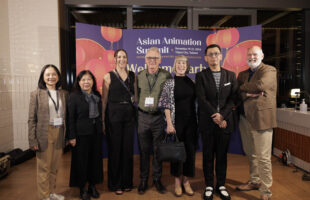World Wrestling Entertainment (WWE) is no stranger to the Asia Pacific, with loyal fans strewn across the region from Japan and Korea, through South and Southeast Asia, down to Australia and New Zealand. Recently, Taj TV’s Ten Sports brought WWE Superstar The Great Khali back to his native India; fans were able to meet the 7 ft 3 inch, 420 pound giant at live events at the NSIC Exhibition Ground during his two days in New Delhi, May 7 & 8; and at Bhavans College Grounds during his time in Mumbai May 9 & 10. And June 2008 sees the SmackDown/ECW Live Event Tour, comprising seven live events, taking place in five Australian cities, Sydney, Melbourne, Adelaide, Newcastle and Brisbane; and two New Zealand cities, Auckland and Christchurch. A similar tour in 2007 saw 95% of tickets sold on the first day. But with so many brand extensions, including on-the-ground and merchandising, what does WWE consider its core business? “We are a content-led company,” says WWE Asia Pacific president Jonathan Sully. “We have strong pay-TV distribution throughout the region, and worldwide, our content drives licensing activities.” Describing it as essentially a single-brand business, distributed via pay-TV and other platforms, Sully says one of WWE’s biggest strengths is its control of all the rights, and its ability to exploit those rights across the board. “On-screen (TV, on-line and mobile) content remains core – our fan base and their passion extends into licensing and events.” But Sully admits that pay-TV is limited by affiliate reach, making brand extensions even more important in those markets with “finite penetration”. He says live events help retain existing fans by rewarding their loyalty to the on-screen experience. Apart from February 2008’s WWE Tour to Japan and Korea; May’s visit of The Great Khali To India and June’s SmackDown/ECW Live Event Tour of Australia and New Zealand, Sully says the WWE live experience has previously, and will again, come to markets like Malaysia, the Philippines and Singapore. With 30% of the company’s business already driven by Asia Pacific Sully says WWE has set very aggressive targets for Latin America, EMEA and Asia Pacific, “We’re targeting double-digit growth across all business units,” he says, with TV and digital the two main drivers of this growth. “Pay TV is the natural home of PPV, so we’re constantly looking to increase our penetration, and not ruling out terrestrial/FTA opportunities. And we already have a very strong digital offering, through which we aim to monetize content.” Sully considers digital as monetizing the content, rather than attempting to replicate the TV experience. “We own all the content that can be manipulated to suit our partners’ needs on the smaller screen. Highlights, for example, aren’t language dependant; we also offer ringtones that are talents’ signature tunes, and wallpapers/screensavers.” In a region with such technological extremes, Sully says they have to consider how best the content will work for an operator’s audience. “In Korea we’re exploring longer form content for mobile, while in less mature markets it’s about the delivery of mass volume lower-end applications.” In terms of business opportunities in the region, he says WWE has lots of partners with other sides to their business, such as telco’s reversing back into content delivery, for which they are sourcing other types of content. “Our biggest priority is to ensure that our brand business and content is at the top of the shopping list,” he says. Although, in essence, a single brand business, WWE is sub-divided into three parts: Raw, SmackDown and ECW. The company produces a staggering nine hours of content per week, 52 weeks of the year, which, according to Sully, “helps outpace the DVD pirates.” In the Asia Pacific region, WWE’s weekly television programming is broadcast in 19 territories including India (TEN Sports), Singapore (StarHub), Malaysia (Astro and TV3), the Philippines (Solar Entertainment), South Korea (CJ Media), Japan (JSports), Taiwan (MAX TV) and Thailand (True Visions). In addition, the company’s 14 annual pay-per-view (PPV) events, such as Summer Slam and Survivor Series are broadcast in the region through WWE’s partnerships with TV affiliates Astro, StarHub, Solar Entertainment, JSports, TrueVisions, Sky Pacific, Australia’s Main Event and The Box in New Zealand. The biggest of these PPV events – WrestleMania, which Sully describes as WWE’s equivalent of the SuperBowl – saw its XXIV (24th) event take place on March 30, 2008 in Orlando, Florida. Asked whether there are any plans for the localization of the product to further aid the brand’s expansion, Sully says tastes do vary slightly by market, but any ‘local’ faces have to be an integrated part of the overall offering. “It made a lot of sense to bring The Great Khali to his native India, and Umaga (the Samoan Bulldozer) will be part of the Tour to Australia and New Zealand,” he explains. “And in Japan, there is a demand for talent with great technique and high levels of expertise.”
Ad – Before Content
Related Articles
FIFTH SEASON inks strategic partnership with Front Street Pictures for TV movies slates
Taiwan Hosts Asian Animation Summit for the First Time Bringing Together Major Buyers Netflix and Warner Bros.
Sphere Abacus appoints Toby McCathie as Finance Director
Hello, Love, Again becomes 1st Filipino film to hit 1 Billion Pesos in World Wide Box Office
Banijay Rights Signs Premium Scripted and Factual Package Deal with ABC in Australia
yes Studios to represent thrilling new Icelandic drama HAZE







